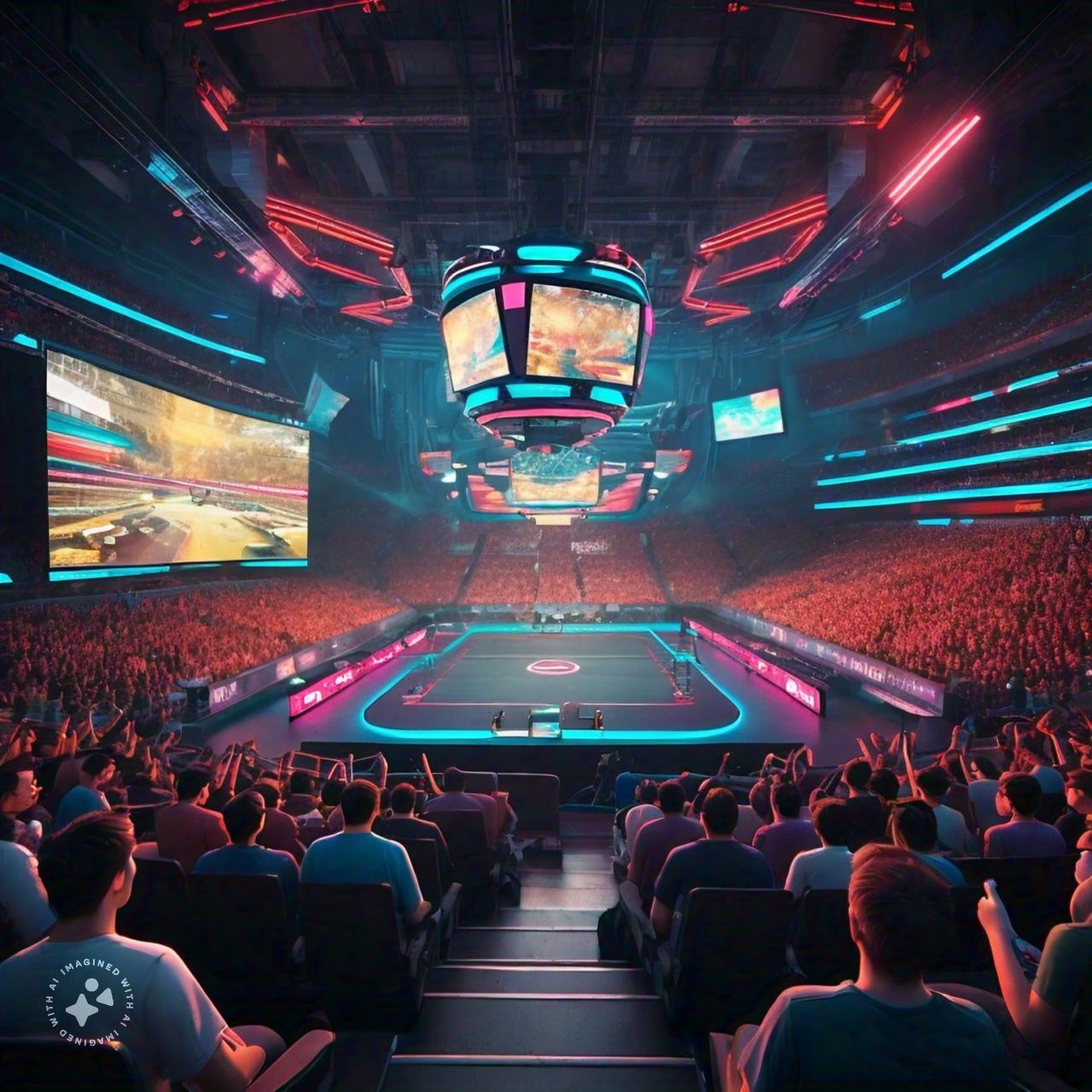The Impact and Future of Virtual Reality in Gaming Leave a comment
Introduction
Virtual Reality (VR) has transcended from being a futuristic concept to a tangible technology that is reshaping the way we experience digital content. From gaming and entertainment to education and healthcare the VR is creating new avenues for immersive experiences. This article delves into how VR is poised to redefine our interaction with digital environments to its current applications and what the future holds for this revolutionary technology.
The Evolution of Virtual Reality
The journey of VR began in the mid-20th century with rudimentary simulators and visual devices. However, it was not until the 1990s that VR started gaining mainstream attention with advancements in computing power and display technology. Early VR systems were bulky expensive and offered limited interactivity but they laid the groundwork for the sophisticated VR experiences we have today.
In recent years the significant strides in hardware and software have made VR more accessible and practical. The introduction of high resolution displays the powerful graphics processing units (GPUs) and motion tracking technologies have enhanced the realism and immersion of VR experiences. Additionally, the reduction in cost has allowed a broader audience to explore VR for making it a viable platform for both consumers and businesses.
Current Applications of Virtual Reality
Gaming and Entertainment
Gaming remains the most prominent application of VR offering players an unparalleled level of immersion. VR games transport players into virtual worlds where they can interact with their environment in ways that traditional gaming cannot match. Popular VR platforms like Oculus Rift, PlayStation VR and HTC Vive have revolutionized the gaming industry by providing realistic and engaging experiences.
Beyond gaming the VR is making waves in the entertainment sector. Virtual concerts, live events and immersive cinema are just a few examples of how VR is enhancing entertainment. Viewers can now attend a live concert from the comfort of their homes or watch a movie as if they were part of the scene for bringing a new dimension to entertainment consumption.
Education and Training
VR is transforming education by offering interactive and immersive learning experiences. Traditional classrooms are being supplemented with VR based modules that allow students to explore complex concepts in a more engaging manner. For instance the medical students can perform virtual surgeries for engineering students can interact with 3D models of machinery and history students can take virtual tours of ancient civilizations.
In the modern era of professional training the VR is proving invaluable. Industries such as aviation, military and manufacturing use VR simulations to train personnel in a safe and controlled environment. These simulations provide realistic scenarios that help trainees develop critical skills without the risk associated with real world training.
Healthcare
The healthcare industry is one of the biggest beneficiaries of VR technology. VR is being used for a range of applications from pain management and psychological therapy to surgical training and patient education. Virtual reality exposure therapy (VRET) is effective in treating conditions like PTSD, anxiety and phobias by gradually exposing patients to their fears in a controlled virtual environment.
Surgeons are using VR for pre operative planning and simulation which allowing them to practice complex procedures before performing them on patients. This not only improves surgical outcomes but also reduces the risk of complications. Moreover, VR is aiding in physical rehabilitation by providing interactive exercises that make the recovery process more engaging and effective.
The Future of Virtual Reality
Advancements in Hardware and Software
The future of VR will be shaped by continuous advancements in hardware and software. Lighter and more comfortable headsets with higher resolution displays will enhance user experience. Innovations in haptic feedback technology will allow users to feel physical sensations within the virtual world for further blurring the line between the real and virtual.
On the software front the improvements in artificial intelligence and machine learning will enable more sophisticated and responsive virtual environments. AI driven characters and environments will provide more dynamic and personalized experiences for making VR applications more engaging and realistic.
Integration with Augmented Reality
The convergence of VR and Augmented Reality (AR) will open up new possibilities for immersive experiences. Mixed Reality (MR) combines elements of both VR and AR to allow users to interact with digital objects in the real world. This hybrid approach can be particularly useful in fields like retail architecture and interior design where users can visualize products and designs in their actual environment.
Expanding Market and Accessibility
As VR technology becomes more affordable its market penetration is expected to increase significantly. The expansion of 5G networks will also play a crucial role in the growth of VR by providing the necessary bandwidth and low latency required for seamless VR experiences. This will enable more users to access high quality VR content without the need for expensive hardware.
Moreover, the development of standalone VR headsets that do not require a connection to a PC or console will make VR more accessible to the general public. These all in one devices will lower the entry barrier and encourage wider adoption across different demographics.
Ethical Considerations and Challenges
Despite its potential, VR also poses several ethical considerations and challenges. Privacy and data security are major concerns as VR systems collect vast amounts of personal data. Ensuring this data is protected and used responsibly is paramount to maintaining user trust.
Additionally, prolonged use of VR can lead to physical discomfort and health issues such as eye strain and motion sickness. Developers must address these issues by designing ergonomic and user friendly VR experiences. Furthermore, there is a need for guidelines and regulations to govern the use of VR especially in sensitive areas like healthcare and education.
Conclusion
Virtual Reality is undoubtedly the future of immersive experiences with the potential to transform various industries and aspects of our daily lives. Its ability to create realistic and interactive digital environments offers unprecedented opportunities for entertainment, education, healthcare and beyond. As technology growing rapidly VR will become an integral part of our digital landscape for redefining how we interact with the world around us.
The journey of VR is just beginning and the possibilities are endless. With continued innovation and responsible development VR has the potential to enhance our lives in ways we are only beginning to imagine. The future of fascinating experiences are bright and Virtual Reality is at the forefront of this exciting frontier.

om Crew, an expert in entertainment, brings extensive expertise and experience to his writing. As a distinguished author, he offers readers captivating insights and behind-the-scenes looks, blending his deep industry knowledge with engaging narratives that entertain and inform.




















